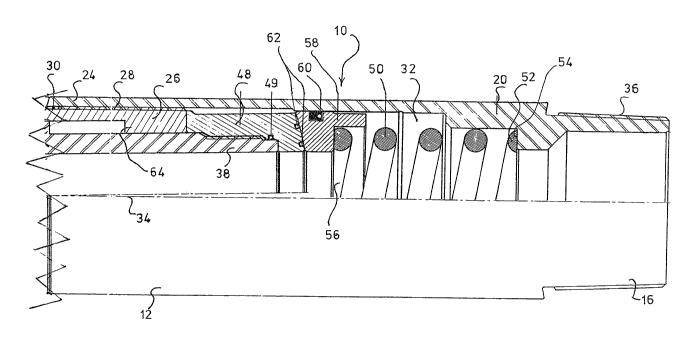Some of the information on this Web page has been provided by external sources. The Government of Canada is not responsible for the accuracy, reliability or currency of the information supplied by external sources. Users wishing to rely upon this information should consult directly with the source of the information. Content provided by external sources is not subject to official languages, privacy and accessibility requirements.
Any discrepancies in the text and image of the Claims and Abstract are due to differing posting times. Text of the Claims and Abstract are posted:
| (12) Patent Application: | (11) CA 2019898 |
|---|---|
| (54) English Title: | ADJUSTABLE BENT SUB |
| (54) French Title: | RACCORD CINTRE REGLABLE |
| Status: | Dead |
| (52) Canadian Patent Classification (CPC): |
|
|---|---|
| (51) International Patent Classification (IPC): |
|
| (72) Inventors : |
|
| (73) Owners : |
|
| (71) Applicants : |
|
| (74) Agent: | MOFFAT & CO. |
| (74) Associate agent: | |
| (45) Issued: | |
| (22) Filed Date: | 1990-06-26 |
| (41) Open to Public Inspection: | 1991-12-26 |
| Examination requested: | 1991-06-25 |
| Availability of licence: | N/A |
| (25) Language of filing: | English |
| Patent Cooperation Treaty (PCT): | No |
|---|
| (30) Application Priority Data: | None |
|---|
ABSTRACT OF THE DISCLOSURE
An adjustable bent sub for use in earth drilling. The
bent sub has a tubular mandrel with an offset axis which is
telescopically received in a tubular housing with an offset
axis. By rotation of the mandrel in relation to the housing
an adjustment may be made in a bend created by the cumulative
effect of the offset axis of the mandrel and the offset axis
of the housing. A longitudinal stop limits longitudinal
displacement of the mandrel within the housing. The mandrel
is longitudinally slidable within the housing between a first
position wherein further displacement toward the second end
of the housing is limited by the longitudinal stop and a
second position wherein the mandrel is displaced toward the
first end of the housing. A rotational stop prevents
relative rotation between the mandrel and the housing when
the mandrel is in the first position and allows such relative
rotation when the mandrel is in the second position.
rotator acts between the mandrel and the housing, reacting to
longitudinal displacement between the mandrel and the housing
to cause a predetermined amount of relative rotation between
the mandrel and the housing when the mandrel is displaced
from the first position to the second position and returned
to the first position. A split ring locks the mandrel in the
first position.
Note: Claims are shown in the official language in which they were submitted.
Note: Descriptions are shown in the official language in which they were submitted.

For a clearer understanding of the status of the application/patent presented on this page, the site Disclaimer , as well as the definitions for Patent , Administrative Status , Maintenance Fee and Payment History should be consulted.
| Title | Date |
|---|---|
| Forecasted Issue Date | Unavailable |
| (22) Filed | 1990-06-26 |
| Examination Requested | 1991-06-25 |
| (41) Open to Public Inspection | 1991-12-26 |
| Dead Application | 1993-12-27 |
There is no abandonment history.
| Fee Type | Anniversary Year | Due Date | Amount Paid | Paid Date |
|---|---|---|---|---|
| Application Fee | $0.00 | 1990-06-26 | ||
| Registration of a document - section 124 | $0.00 | 1991-07-26 | ||
| Registration of a document - section 124 | $0.00 | 1991-07-26 | ||
| Maintenance Fee - Application - New Act | 2 | 1992-06-26 | $100.00 | 1992-06-12 |
| Registration of a document - section 124 | $0.00 | 2001-11-07 |
Note: Records showing the ownership history in alphabetical order.
| Current Owners on Record |
|---|
| CANADIAN FRACMASTER LTD. |
| Past Owners on Record |
|---|
| 392534 ALBERTA LTD. |
| CANADIAN FRACMASTER (OFFSHORE) LTD. |
| WAWRZYNOWSKI, MICHAEL |